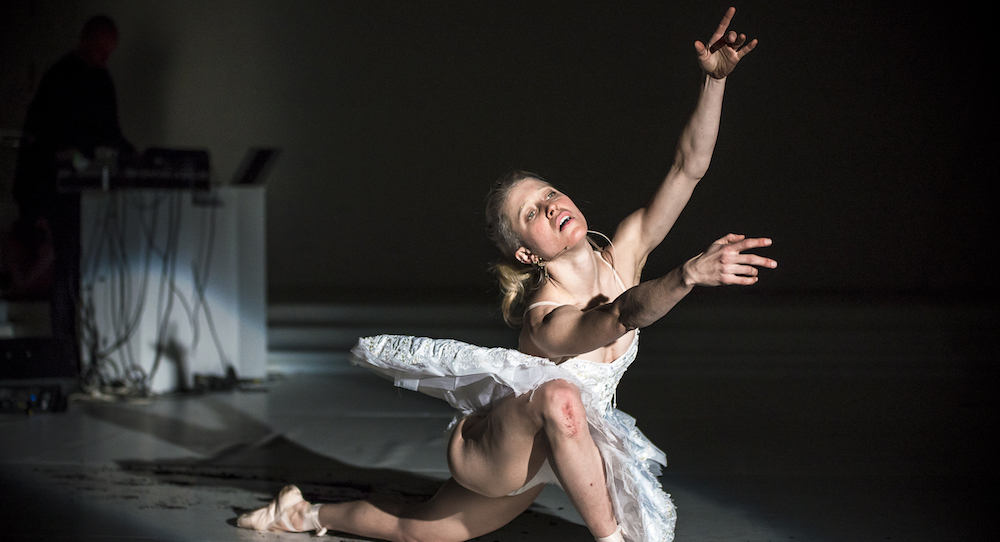Dancehouse, Melbourne.
July 5, 2017.
Sometimes, even relatively tired ideas can be woken up. We’ve witnessed the whole “artist making work about making work” thing enough times to have our head around the core ideas (the nature of spectacle, the intrinsic problems with artifice, et cetera); but what Natalie Abbott does with this trope is to reconfigure it with sheer imaginative force and no small amount of daring. The result is at once poignant and funny, raw yet expertly constructed, broadly political but still quite personal.

Natalie Abbott’s ‘(re)PURPOSE: the MVMNT’. Photo by Gregory Lorenzutti for Dancehouse.
At its heart, (re)PURPOSE: the MVMNT is a highly textured fusion of familiar ideas. Starting with the female body and its place in art and dance in particular, it teases out themes of beauty, aging and the consumption of women as objects of fetishised tragedy. Yet rather than stick with textbook cant, Abbott welds this notion to themes of pop culture and high art and to fourth wall eliminating manipulations of narrative and production. Again, we might say that mashing the classic and contemporary and that being “meta” are no longer especially fresh concepts, but what Abbott does here is not so much to reinvent the wheel as to invest its motion with an undeniably mortal momentum. In this work, everything is on a crash course with time. With death.
By teaming up on stage with Cheryl Cameron, Abbott starkly illuminates the nature of the beauty cult in dance. Beginning the piece naked, they make often uncomfortable truths obvious: the firm and sculpted physique of the young dancer against the softer, rumpled body of the older woman, the tragic ballet swan as opposed to the craggy crone. The choreographic trick of mirrored (and later, almost mirrored) movement underlines these contrasts and also our polite middle class discomfort about the truth of our social mediated construction of beauty. Indeed, part of what (re)PURPOSE: the MVMNT does is to spotlight unconscious and complacent assumptions about exactly what “the form of the good” is.

Natalie Abbott’s ‘(re)PURPOSE: the MVMNT’. Photo by Gregory Lorenzutti for Dancehouse.
Yet amidst all the post-modernity, Abbott has injected live theremin (played by Miles Brown) and paid homage to one of classical ballet’s signature short solos, The Dying Swan, originally made famous by the legendary Russian Anna Pavlova more than a century ago. This telling exhumation exposes us to both the clichés of doomed, ephemeral female beauty (plus our morbid, almost vengeful satisfaction at her inevitable destruction), and the ironic timelessness of a key ballet motif; for here, the pretty swan dies amongst laptops, smartphones and contemporary navel gazing.
Abbott’s other trick is to blur the edges of performance, not merely with a very soft beginning but with a brilliantly “empty” ending. That the auditorium is left staring at a bare, hard lit space leaves the ongoing task of “re-purposing movement” to us. After all, if we can obediently perform the audience ritual and applaud a void, there are most likely other fractures we can make in the edifice of art and representation. If only we could be bothered.

Natalie Abbott’s ‘(re)PURPOSE: the MVMNT’. Photo by Gregory Lorenzutti for Dancehouse.
So although (re)PURPOSE: the MVMNT doesn’t do anything particularly new, it lives up to it titular brief by giving us what we’re used to in a slightly altered and arresting way. In doing so, it also gives us a smart, playful and often pointed angle for looking again the ways that dance can be so much more than good looking bodies making lovely lines in time and space.
By Paul Ransom of Dance Informa.

















